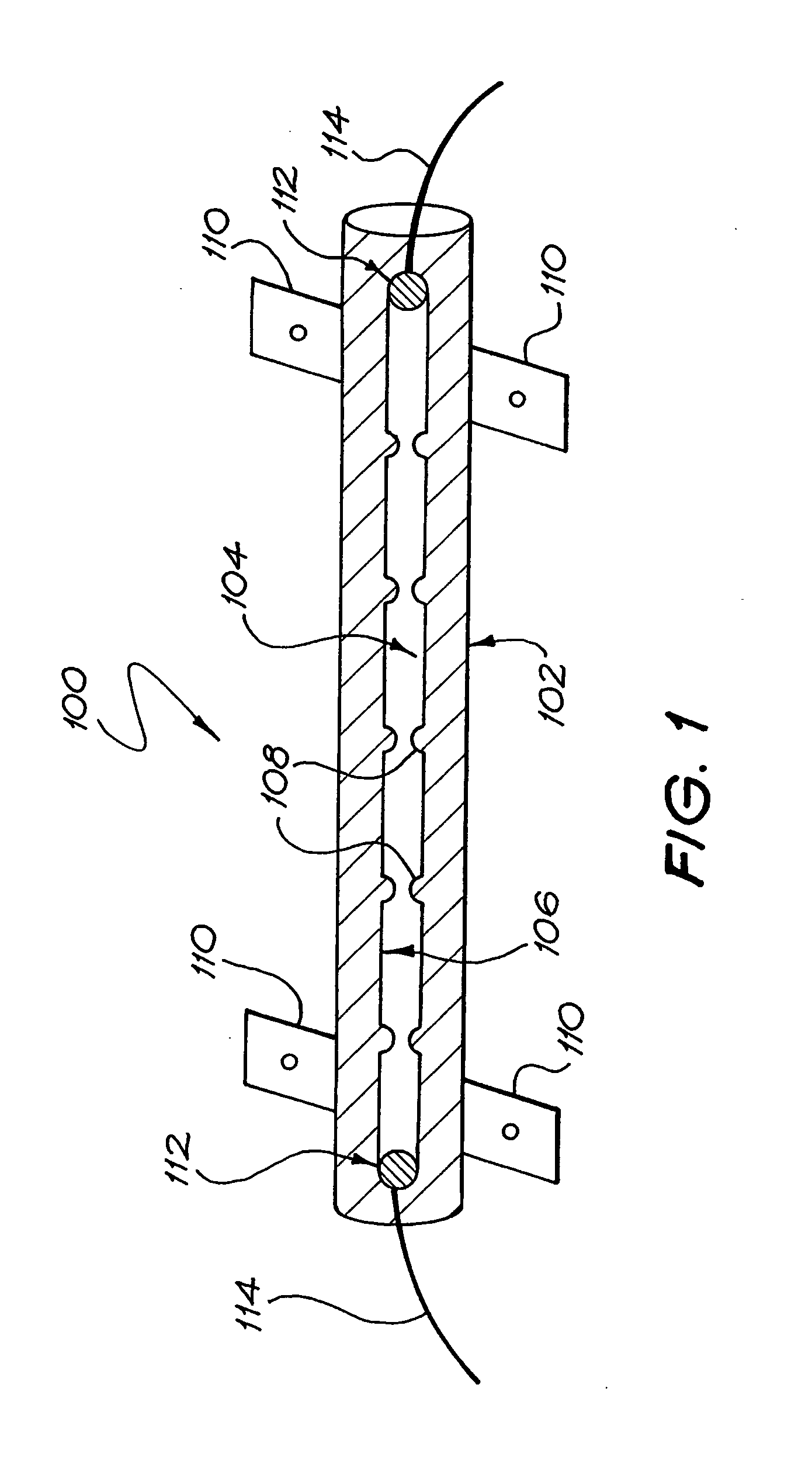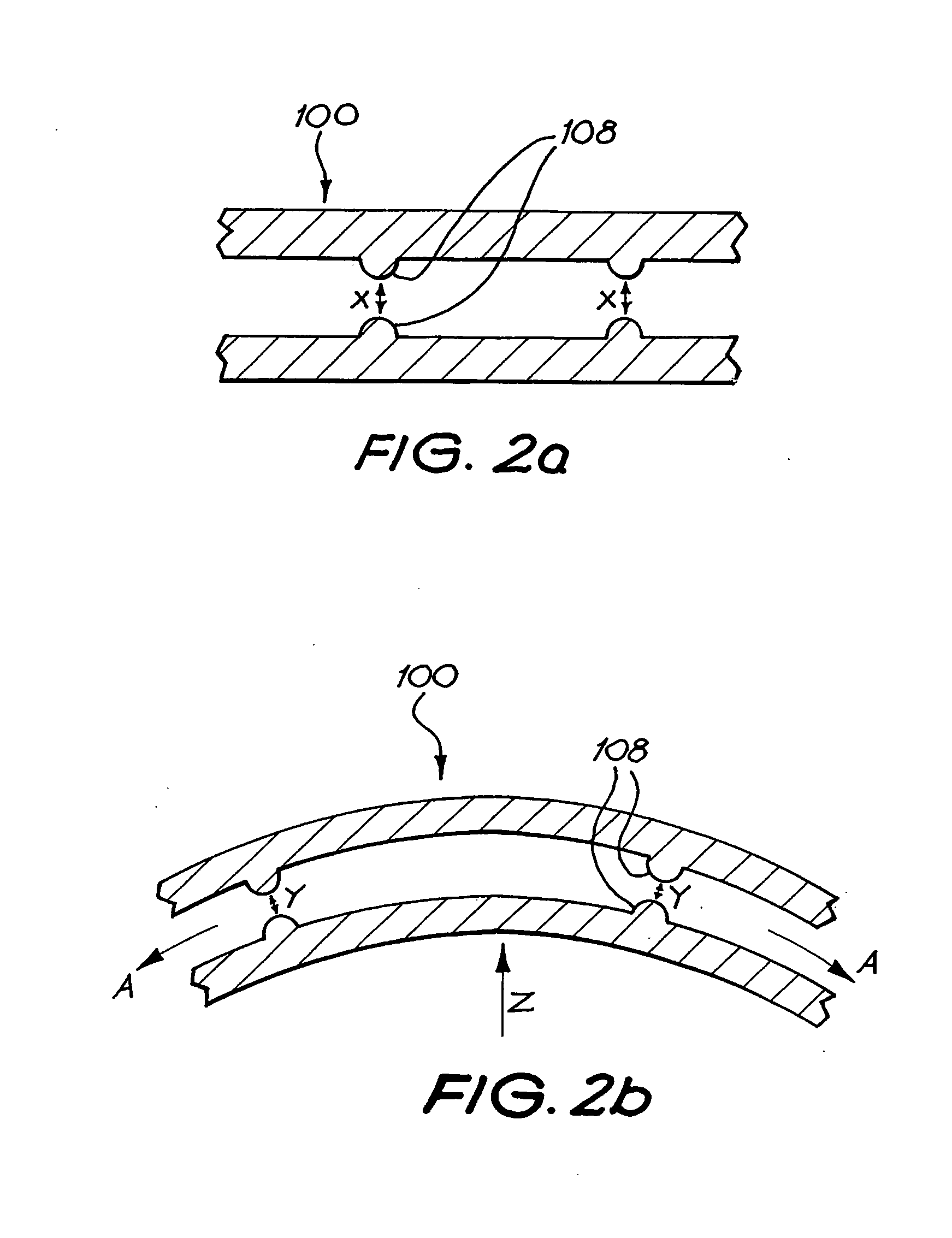Implantable bladder sensor
a sensor and implantable technology, applied in the field of implantable bladder sensors, can solve the problems of faecal incontinence and no well-accepted medical treatment, and achieve the effects of increasing the impedance of conductive materials, reducing the cross-sectional area, and increasing volum
- Summary
- Abstract
- Description
- Claims
- Application Information
AI Technical Summary
Benefits of technology
Problems solved by technology
Method used
Image
Examples
first embodiment
[0052] Referring initially to FIG. 1 of the drawings, an implantable bladder sensor, in accordance with the invention, for monitoring the condition of a person's bladder is illustrated and is designated generally by the reference numeral 100. In particular, the sensor 100 is used for monitoring the volume of fluid present in a person's bladder by monitoring the change in size and / or shape of the bladder. While the person is normally a human, the technique can apply equally to other animals.
[0053] The sensor 100 includes a carrier 102 which carries an impedance-varying means 104. The carrier 102 is a tube having closed ends. The tube 102 contains the impedance-varying means 104 which is in the form of a conductive fluid, such as saline solution.
[0054] An inner wall 106 of the tube 102 carries an impedance enhancing arrangement in the form of a series of diametrically opposed raised formations 108, thereby forming a series of chambers for receiving the impedance-varying means 104. Th...
second embodiment
[0061] Referring to FIG. 4 of the drawings, an implantable bladder sensor, in accordance with the invention, for monitoring the condition of a person's bladder is illustrated and is designated generally by the reference numeral 10. Once again, the sensor 10 is used in monitoring the volume of a person's bladder 12.
[0062] The sensor 10 includes a carrier 14 with an impedance-varying means 16 carried by the carrier 14.
[0063] In the embodiment of the invention shown in FIG. 4 of the drawings, the carrier 14 is a length of conductive silicone. The carrier 14 is attached to a wall 18 of the bladder 12 by, for example, sutures 20.
[0064] The impedance-varying means 16 is in the form of a probe 22 having a foot portion 24 which bears against an outer surface 26 of the wall 18 of the bladder 12.
[0065] When the bladder 12 has a low volume, the wall 18 of the bladder 12 is in a relaxed state and, as a result, the carrier 14 is similarly relaxed due to very little pressure, if any at all, be...
third embodiment
[0067] Referring to FIGS. 5 to 7 of the drawings, an implantable bladder sensor, in accordance with the invention, for monitoring the condition of a person's bladder is illustrated and is designated generally by the reference numeral 30.
[0068] The sensor 30 includes a carrier in the form of a sealed bag 32. The sealed bag 32 contains a non-conductive material in the form of a non-conductive solution 34. An impedance-varying means 36 is contained within the bag 32 and has leads 38 projecting through sealed ends of the bag 32. The ends are sealed in a manner to inhibit escape of the solution 34 from the interior of the bag 32.
[0069] The impedance-varying means 36 comprises a strip 40 of a non-conductive material. A side of the strip 40 which, in use, constitutes an operatively outer side (ie. that side of the strip 40 which is furthest away from the wall of the bladder) carries a layer of a conductive material 42.
[0070] As illustrated more clearly in FIGS. 6 and 7 of the drawings, t...
PUM
 Login to View More
Login to View More Abstract
Description
Claims
Application Information
 Login to View More
Login to View More - R&D
- Intellectual Property
- Life Sciences
- Materials
- Tech Scout
- Unparalleled Data Quality
- Higher Quality Content
- 60% Fewer Hallucinations
Browse by: Latest US Patents, China's latest patents, Technical Efficacy Thesaurus, Application Domain, Technology Topic, Popular Technical Reports.
© 2025 PatSnap. All rights reserved.Legal|Privacy policy|Modern Slavery Act Transparency Statement|Sitemap|About US| Contact US: help@patsnap.com



